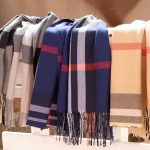Muslin and gauze both offer breathable cotton fabrics but differ in weave and feel. Muslin is tightly woven, smooth, and durable, perfect if you want structure for clothing or home décor. Gauze is loosely woven, lightweight, and airy, ideal for warm weather or delicate uses like baby wraps. If you prioritize softness and airflow, gauze might suit you better, but for sturdiness and versatility, pick muslin. Understanding these can help you decide which fabric fits your needs best.
Table of Contents
Key Takeaways
- Muslin is a tightly woven, smooth cotton fabric, while gauze features a loose, open weave with a soft, crinkled texture.
- Choose muslin for structured projects like dressmaking, quilting, and home décor requiring durability and shape retention.
- Opt for gauze when you need lightweight, highly breathable fabric ideal for summer clothing, wraps, or medical dressings.
- Muslin offers better durability and withstands frequent washing, whereas gauze requires gentle care to maintain its integrity.
- Decision depends on your need for texture (smooth vs. airy), fabric weight (medium vs. light), and usage purpose (structured vs. casual).
What Is Muslin Fabric?
Muslin fabric is a lightweight, plain-woven cotton material known for its breathability and softness. When you choose muslin, you’re opting for a versatile textile that’s smooth yet sturdy enough for various uses.
Muslin is a lightweight, breathable cotton fabric that’s both soft and durable for many uses.
You’ll find it commonly used in clothing, curtains, and craft projects because it drapes well and feels gentle against the skin. Its tight weave offers a subtle texture, making it ideal for both functional and decorative purposes.
Muslin’s natural cotton fibers allow air to circulate, so you stay comfortable even in warm weather. Plus, it’s easy to dye and print on, giving you plenty of creative freedom.
If you want a reliable, all-purpose fabric, muslin is a smart choice that balances durability with comfort.
What Is Gauze Fabric?
Although gauze fabric shares some similarities with muslin, it stands out for its loose, open weave that makes it exceptionally lightweight and breathable.
When you choose gauze, you get a fabric that’s soft, airy, and perfect for warm weather or layering. Its texture is slightly crinkled, giving it a casual, relaxed look.
You’ll find gauze commonly used in baby blankets, summer clothing, and medical dressings because it’s gentle on the skin yet durable enough for everyday use.
Here’s why gauze might be your go-to fabric:
- Highly breathable, keeping you cool and comfortable
- Quick to dry, ideal for humid climates or active wear
- Soft texture that feels cozy against sensitive skin
Gauze offers versatility and comfort you’ll appreciate in many projects.
Historical Origins of Muslin and Gauze
You’ll find that both muslin and gauze have roots stretching back to ancient times, shaped by their geographic origins.
Understanding where they came from helps explain their early uses and how they evolved over time.
Let’s explore how these fabrics started and what made them unique in history.
Ancient Textile Beginnings
While both muslin and gauze are widely used today, their origins trace back to ancient civilizations where skilled artisans developed these textiles for distinct purposes.
You’ll find that muslin started as a finely woven cotton fabric prized for its softness and versatility, often used in clothing and household items.
Gauze, on the other hand, began as a loosely woven fabric designed for breathability and lightness, making it ideal for medical and ceremonial uses.
Here’s what you should know about these ancient beginnings:
- Muslin was crafted with tight, intricate weaving techniques to create a smooth texture.
- Gauze’s open weave allowed air to pass through easily, perfect for bandages.
- Both fabrics reflected the cultural needs and craftsmanship of their time.
Understanding this helps you appreciate why they remain popular today.
Geographic Origins Impact
Because muslin and gauze originated in different regions, their geographic roots greatly shaped their development and uses.
Muslin comes from the Indian subcontinent, particularly Bengal, where the warm climate and skilled weavers enabled the production of fine, lightweight cotton fabric. This gave muslin its smooth texture and versatility, making it popular for clothing and household textiles.
On the other hand, gauze traces back to the Middle East, especially Gaza, where the fabric’s loose weave suited the dry climate and practical needs like bandages and curtains.
Knowing these origins helps you appreciate why muslin feels softer and gauze is more open and airy.
When choosing between them, consider how their regional characteristics influenced their texture and function, guiding you to the fabric that fits your specific needs best.
Early Uses and Evolution
Although muslin and gauze share a lightweight cotton base, their early uses diverged considerably due to cultural and practical needs.
When you look back, muslin first gained popularity as a fine fabric for clothing and household items, prized for its softness and breathability.
Gauze, on the other hand, was primarily valued for medical and utilitarian purposes thanks to its loose weave and absorbency.
As you explore their evolution, you’ll notice how each fabric adapted to different demands:
- Muslin was often used in fashion and curtains, evolving with textile innovations.
- Gauze became essential in wound dressings and surgical applications, reflecting advances in healthcare.
- Both fabrics eventually crossed into various industries, but their roots highlight distinct functional paths.
Understanding this helps you choose the right fabric based on your needs.
Weave and Texture Differences
When you compare muslin and gauze, their weave and texture reveal key differences that affect their uses. Muslin features a tighter, plain weave which gives it a smooth, even texture. Gauze, on the other hand, has a loose, open weave that feels airy and lightweight. This difference means muslin is more durable, while gauze offers greater breathability. Understanding these traits helps you decide which fabric suits your needs best.
| Feature | Muslin |
|---|---|
| Weave | Tight, plain weave |
| Texture | Smooth, even |
| Durability | High |
| Breathability | Moderate |
| Feel | Soft but firm |
| Feature | Gauze |
| Weave | Loose, open weave |
| Texture | Airy, lightweight |
| Durability | Lower |
| Breathability | High |
| Feel | Soft, gauzy |
Common Uses for Muslin
Muslin serves many practical purposes thanks to its tight weave and durable texture.
When you choose muslin, you’re opting for a versatile fabric that holds up well to repeated use and washing. It’s a go-to for projects that require a bit more structure and longevity without sacrificing breathability.
You’ll find muslin commonly used for:
- Dressmaking: Perfect for mock-ups or lightweight garments that need a smooth finish.
- Home décor: Ideal for curtains, tablecloths, and upholstery lining due to its sturdiness.
- Crafting: Great for quilting, embroidery backing, and reusable produce bags.
If you need a fabric that balances durability with softness, muslin is a smart choice you can rely on.
Common Uses for Gauze
When you think of gauze, medical and first aid uses probably come to mind first.
You’ll find it essential for dressing wounds and controlling bleeding. Plus, gauze is a staple in baby care, perfect for gentle cleaning and breathable swaddling.
Medical and First Aid
Gauze plays an essential role in medical and first aid settings, offering a versatile solution for wound care and injury management.
When you’re treating cuts, scrapes, or burns, gauze helps protect the injury while allowing it to breathe. It also absorbs blood and fluids, reducing infection risk. In emergencies, gauze is your go-to for creating pressure dressings to control bleeding quickly and effectively.
You’ll find gauze useful for:
- Dressing wounds securely without sticking to the skin
- Padding injuries to cushion and protect sensitive areas
- Making slings or bandages to immobilize injured limbs
Baby Care Essentials
Softness and breathability make gauze a must-have in baby care essentials.
When you’re caring for a newborn, gauze is perfect for gentle cleaning around the eyes and nose without irritating sensitive skin. You can also use it to wipe up spills or drool because it absorbs moisture quickly and dries fast.
Gauze’s lightweight texture helps prevent overheating when you use it as a swaddle or a breathable cover during warmer months. Plus, it’s easy to wash and dries quickly, so you’ll always have a clean piece ready.
Whether you’re dealing with minor scrapes or just need a soft cloth for everyday care, gauze offers versatility and comfort that both you and your baby will appreciate.
Durability and Care Instructions
Both muslin and gauze require specific care to maintain their durability, but you’ll find that muslin tends to withstand frequent washing better than gauze.
Muslin’s tighter weave helps it hold up through multiple cycles without losing shape, while gauze’s loose weave can become fragile over time.
Muslin’s tight weave endures frequent washing, while gauze’s loose weave may weaken and become fragile over time.
To keep both fabrics in good shape, you’ll want to follow some simple care tips:
- Wash in cold water on a gentle cycle to prevent damage.
- Avoid harsh detergents and bleach, which can weaken fibers.
- Air dry or tumble dry on low heat to maintain fabric integrity.
Comparing Breathability and Comfort
When you’re choosing between muslin and gauze, how breathable and comfortable the fabric feels against your skin matters a lot. Both fabrics allow air to flow, but gauze is lighter and more porous, making it exceptionally breathable. Muslin, while soft, is slightly denser, offering a cozy feel without sacrificing ventilation. Your choice depends on whether you prefer a lighter, airier fabric or a soft, somewhat thicker one.
| Feature | Muslin | Gauze |
|---|---|---|
| Breathability | Good | Excellent |
| Texture | Soft, smooth | Light, slightly crinkled |
| Thickness | Medium | Thin |
| Comfort Level | Cozy, gentle | Airy, light |
| Ideal Use | Swaddling, blankets | Summer clothing, wraps |
How to Choose Between Muslin and Gauze
Choosing between muslin and gauze comes down to understanding how each fabric fits your specific needs.
You want to take into account the purpose, texture, and durability before making your choice. Muslin is great if you need a sturdier, more tightly woven fabric, while gauze works better for lightweight, airy applications.
Think about these key points:
- Purpose: Use muslin for structured projects like curtains or dressmaking; gauze suits swaddles and lightweight wraps.
- Texture: Muslin feels smoother and more substantial; gauze is soft and loosely woven for extra breathability.
- Durability: Muslin holds up better over time, whereas gauze can wear out faster but offers gentle airflow.
Frequently Asked Questions
Can Muslin and Gauze Fabrics Be Dyed Easily?
You can dye both muslin and gauze fabrics easily since they’re made from natural fibers like cotton. Just make sure to use the right dye and follow instructions carefully to get vibrant, even colors on your fabric.
Are Muslin and Gauze Fabrics Hypoallergenic?
You’ll find both muslin and gauze are generally hypoallergenic since they’re made from natural cotton. They’re gentle on sensitive skin, making them great choices if you’re prone to allergies or irritation from synthetic fabrics.
Which Fabric Is Better for Newborn Clothing?
You want the best for your baby, right? Muslin’s softness and breathability make it perfect for newborn clothing. Its gentle texture keeps your little one cozy and comfortable, so you can’t go wrong choosing muslin.
Can Muslin and Gauze Be Used in Upholstery?
You can use muslin and gauze for upholstery, but muslin’s tighter weave offers more durability. Gauze is lightweight and breathable, better for decorative or light-use pieces rather than heavy, everyday furniture upholstery.
Do Muslin and Gauze Fabrics Shrink After Washing?
Shrinking surprises sometimes strike both muslin and gauze. You’ll find muslin shrinks more noticeably after washing, while gauze’s gentle gauzy grid usually keeps its size. Always pre-wash to prevent pesky puckering!
- How to Choose the Right Ikat Fabric for a Sofa - June 28, 2025
- The Connection Between Ikat and Tribal Design - June 28, 2025
- A Guide to Quadrille’s Famous Ikat Patterns - June 28, 2025






